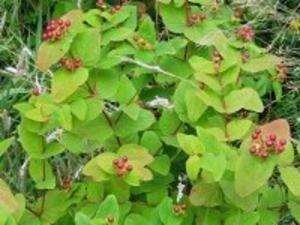Search for Parma victoriae returned 780 results.
Refine results
Refine results
Section
- Species (449)
- Common Name (92)
- Site Page (92)
- Biodiversity Science project (43)
- Data resource (40)
- Institution (18)
- Collection (17)
- Data provider (13)
- Spatial layer (8)
- Support article (6)
- Species list (2)
Image available
- Yes (151)
Taxonomic status
- Accepted (209)
- Synonym (136)
- Heteroptypic Synonym (69)
- unreviewed (13)
- Homotypic Synonym (10)
- Misapplied (5)
- Pro-parte Synonym (5)
- Miscellaneous Literature (1)
- Subjective Synonym (1)
Conservation status in Australia
- Endangered (3)
- Critically Endangered (1)
- Vulnerable (1)
Conservation status in ACT
- Endangered (1)
- Vulnerable (1)
Conservation status in NSW
- Vulnerable (1)
Conservation status in QLD
- Vulnerable (1)
Conservation status in VIC
- Endangered (8)
- Vulnerable (4)
- Critically Endangered (3)
Conservation status in TAS
- Rare (1)
- Vulnerable (1)
Conservation status in SA
- Vulnerable (1)
Conservation status in WA
Conservation status in NT
- Critically Endangered (1)
- Vulnerable (1)
-
Biodiversity Science project: Orange-bellied Parrot Recovery
The Orange-bellied Parrot is a small 'grass parrot' and as its name suggests, has an orange patch on its belly. They migrate between the Australian mainland and Tasmania, spending summer breeding in Tasmania and winter in coastal Victoria and South Australia. Orange-bellied Parrots nest in hollows of eucalypt trees near button grass plains in south-west Tasmania. Sadly, the OBP is one of Australia's most threatened species, with less than 50 parrots thought to exist in the wild today...

-
Biodiversity Science project: Tutsan biocontrol
Hypericum androsaemum Tutsan Tutsan is a declared noxious weed which invades woodlands and pastures in Australia, causing adverse effects to both native flora and grazing livestock. One biocontrol agent has been released to for tutsan: 1. Tutsan rust *Melampsora hypericorum* Release of tutsan rust is expected to reduce the spread and density of tutsan infestations. Tutsan rust is now established in many locations including in Victoria, where it aids in controlling tutsan populations...

-
Site Page: Australia’s Virtual Herbarium helps unlock the history of invasive species – Atlas of Living Australia
Posted on 26th August 2015 A team of Victorian researchers has analysed data extracted from over three million plant specimens to reconstruct the introduction of invasive plant species into Australia for the first time. Invasive plants are estimated to cost the Australian economy over $4 billion a year through lost production and increased control costs. They have also been linked to the extinction of several endangered species...
-
Site Page: ALA and the Great Eastern Ranges initiative – Atlas of Living Australia
Posted on 6th April 2011 By Lynne Sealie, Atlas of Living Australia The Atlas of Living Australia (ALA) is collaborating with the Greater Eastern Ranges Initiative (GER) to increase the use of ALA tools by GER partners in their project activities...
-
Site Page: Volunteers tackling digitisation of collections – Atlas of Living Australia
Posted on 18th April 2018 Digitisation of collections continues as DigiVol reaches 3,000 registered volunteers. Specimen in the Milwaukee Public Museum collection. Image credit: Milwaukee Public Museum DigiVol is a collaboration between the Atlas of Living Australia and the Australian Museum, and was launched in 2011 initially as an experiment in crowd-sourcing. The Australian Museum wanted to see whether there were online volunteers willing to help natural history collections capture data...
-
Site Page: BowerBird builds new nest on iNaturalist – Atlas of Living Australia
Posted on 24th June 2019 The BowerBird.org.au site for sharing and discussing biodiversity is closing down after more than 10 years, but its citizen science community will continue to thrive. Dr Ken Walker, the Senior Curator of Entomology at Museums Victoria and founder of BowerBird, shares some of his favourite discovery stories with us and explains how BowerBird users are continuing to participate in biodiversity science through iNaturalist. BowerBird origins Back in 2007 – when...
-
Site Page: UNAA World Environment Day Awards 2011 Nominations – Atlas of Living Australia
Posted on 12th April 2011 Nominations are now open for the 2011 United Nations Association of Australia (UNAA) World Environment Day Awards. Individuals, organisations and businesses working for sustainability and the environment in their homes, schools and workplaces are encouraged to apply. Awards The Awards are held each year in celebration of United Nations World Environment Day (June 5) and this year also in recognition of the 2011 International Year of Forests...
-
Biodiversity Science project: Streamwatch - Georges River Catchment
Streamwatch is a long running water monitoring program initiated by Sydney Water and the Sydney Catchment Authority. From it’s humble beginnings, Streamwatch started with a trial of 15 schools in 1990. From 1991 to 1994 Streamwatch became a project of the Special Environment Levy Trust. The Streamwatch program originally had a focus on curriculum implementation in secondary schools, but quickly extended beyond schools into a citizen science program...

-
Biodiversity Science project: Wheel cactus biocontrol
Opuntia robusta Wheel cactus Wheel cactus, along with all species of Opuntia cacti have been declared [Weeds of National Significance](http://weeds.ala.org.au/WoNS/opuntioidcacti/) due to their invasive nature and negative impact on native flora and fauna. Wheel cactus is drought-resistant and found throughout Australia, particularly in southern Australia, north-western and central Victoria...
-
Biodiversity Science project: Streamwatch - Cooks River Catchment
Streamwatch is a long running water monitoring program initiated by Sydney Water and the Sydney Catchment Authority. From it’s humble beginnings, Streamwatch started with a trial of 15 schools in 1990. From 1991 to 1994 Streamwatch became a project of the Special Environment Levy Trust. The Streamwatch program originally had a focus on curriculum implementation in secondary schools, but quickly extended beyond schools into a citizen science program...
